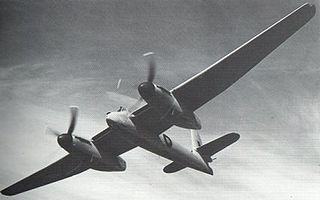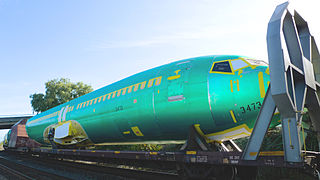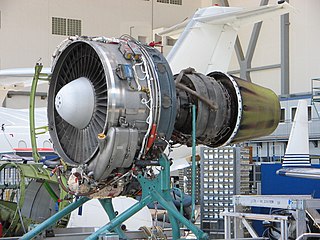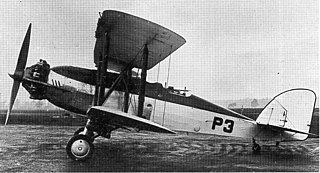The company grew out of the Westland Aircraft Company, who in 1933 enabled the Houston Everest expedition to make the first flight over Mount Everest, using oxygen and heating systems – precursors of the systems that would eventually be produced by Normalair.
Westland Aircraft produced a cabin pressurisation control valve in 1941 for use in the Westland Welkin high altitude fighter bomber aircraft. Though the Welkin never reached full-scale production the same valve was used in Mosquito, Wellington and Spitfire aircraft.
At the end of World War II, Westland had decided to focus on building helicopters, for which their high altitude technology was of no use; and on 15 March 1946 Normalair Limited was established on the Westland site in Yeovil. [1] Ted Boulger was appointed general manager. with J Fearn as Westland Board Director with responsibility for the new company.
During the 1950s the company grew and continued to focus upon providing equipment that would allow aviators to operate at high altitude. In 1951 the company signed an agreement with the Eclipse Pioneer division of Bendix Aviation, now also owned by Honeywell, to manufacture and modify oxygen breathing regulators for aircrew. During this period, the Royal Aircraft Establishment gave the company responsibility for all military oxygen work and as a result the company acquired complete life support systems capability including oxygen masks and emergency oxygen supply. [2]
In anticipation of the long range support needed by the de Havilland Comet, Normalair set up subsidiaries in Melbourne, Australia and Toronto, Canada. The company employed 250 people in 1954 and in the same year produced LOX (Liquid Oxygen) converters for the F-86 Sabre of the German Air Force.
Diversification
1950s and 1960s
In 1957 the publication of Duncan Sandys' Defence White Paper led to the cancellation of many aircraft projects. The company decided to diversify into other markets and took a licence from Drägerwerke, of Germany, to produce compressed air diving and oxygen breathing apparatus. Normalair achieved most success with portable oxygen systems, including the equipment supplied for the first successful ascent, by Tenzing and Hillary, of Mount Everest. [3]
Relatively short-lived was Normalair's entry into the automotive air conditioning market, where the systems were optional extras on Wolseley Wolseley 6/110, [4] Austin Westminster 110, Vanden Plas Princess, Land Rovers and some Rolls-Royces. However the company was some thirty years too early as demand for air conditioned cars in Europe did not materialise; the company withdrew from the market in 1964.
In 1960, further agreements with Bendix brought licensed production of hydraulic servo valves. This expertise was then developed for electro-hydraulic servo valves, actuators and lightweight solenoid-operated hydraulic valves. The company also produced marine hydraulics and valves for submarines.
Also in 1960, the Industrial Electronics Division was formed to use data logging technology brought from Saunders-Roe, after parent company Westland took them over. At the same time the company was involved with development and production of regulators for Harrier and UK Phantom aircraft. The company won a Queens Award to Industry for Export in 1966.
Normalair's high altitude laboratory included a chamber large enough to accommodate a full-size mock-up of the Concorde fuselage. This was used for trials simulating the effects of supersonic cruise at up to 60,000 ft, nearly twice the operating altitude of contemporary airliners. As well as conducting these tests, Normalair developed the cabin pressure control equipment providing a comfortable environment for passengers.
1970s
Several major contracts were won in 1972 to supply the Multi Role Combat Aircraft (MRCA) later to be named Panavia Tornado. In the same year the company acquired the Westland foundry business in Hayes and transferred it to the Drayton Hydroflex premises in Chard, Somerset. Also in that year, Julian Nott set the world altitude record for a hot air balloon of 35,971 ft using a balloon with NGL oxygen equipment.
NGL won several contracts in 1974 to supply the HS146 regional jet, now called the BAe 146, with air conditioning and air systems management equipment.
Diversification continued with the purchase of Facet Enterprises filtration licenses from Voles in 1976. In the same year Normalair’s filtration division was formed in the former glove making factory at Shepton Beauchamp, where it remained for ten years before being moved to the Lynx Trading Estate in Yeovil near to the main plant.
The last vapour cycle air conditioning systems developed by Normalair were fitted to export versions of Alvis Stormer and Scorpion armoured vehicles, and the Khaled tank (a version of the Centurion sold in the Middle East). The company later opted out of making vapour cycle systems to concentrate on air cycle systems only. This decision was to be vindicated 15 years later when the Montreal Protocol saw the end of systems using chlorofluorocarbons and similar gases.
In 1977 NGL began development of its first in-house designed aircraft data recorder, a sealed maintenance recorder for the McDonnell Douglas (now Boeing) F/A-18 Hornet A/B. The recorder had to meet unprecedented environmental and accuracy specifications, and was Normalair’s first order for US defence equipment. The F/A-18 unit placed Normalair at the forefront of aircraft recorder technology and a dedicated electronics division was set up at Clarence Street, near to the former Huish football ground.
The height of Normalair’s fame came with the appearance of the Deep Dive 500 closed circuit breathing system (scuba set) in the James Bond film For Your Eyes Only. The system minimised the emission of bubbles which made it suitable for covert naval operations.
Westland Aircraft was a British aircraft manufacturer located in Yeovil, Somerset. Formed as a separate company by separation from Petters Limited just before the start of the Second World War, Westland had been building aircraft since 1915. During the war the company produced a number of generally unsuccessful designs, but their Lysander would serve as an important liaison aircraft with the Royal Air Force. After the war the company focused on helicopters, and was merged with several other British firms to create Westland Helicopters in 1961.
Westland Helicopters was a British aircraft manufacturer. Originally Westland Aircraft, the company focused on helicopters after the Second World War. It was amalgamated with several other British firms in 1960 and 1961.

The Westland Welkin was a British twin-engine heavy fighter from the Westland Aircraft Company, designed to fight at extremely high altitudes, in the stratosphere; the word welkin meaning "the vault of heaven" or the upper atmosphere. First conceived in 1940, the plane was built in response to the arrival of modified Junkers Ju 86P bombers flying reconnaissance missions, which suggested the Luftwaffe might attempt to re-open the bombing of England from high altitude. Construction was from 1942 to 1943. The threat never materialised; consequently, Westland produced only a small number of Welkins and few of these flew.

A rebreather is a breathing apparatus that absorbs the carbon dioxide of a user's exhaled breath to permit the rebreathing (recycling) of the substantially unused oxygen content, and unused inert content when present, of each breath. Oxygen is added to replenish the amount metabolised by the user. This differs from open-circuit breathing apparatus, where the exhaled gas is discharged directly into the environment. The purpose is to extend the breathing endurance of a limited gas supply, while also eliminating the bubbles otherwise produced by an open circuit system. The latter advantage over other systems is useful for covert military operations by frogmen, as well as for undisturbed observation of underwater wildlife. A rebreather is generally understood to be a portable apparatus carried by the user. The same technology on a vehicle or non-mobile installation is more likely to be referred to as a life-support system.

AlliedSignal, Inc. was an American aerospace, automotive and engineering company, created through the 1985 merger of Allied Corp. and The Signal Companies. It purchased Honeywell for $14.8 billion in 1999, and adopted the Honeywell name and identity.

Garrett Motion Inc., formerly Honeywell Transportation Systems and Honeywell Turbo Technologies, is an American company primarily involved in engineering, development and manufacturing of turbochargers and related forced induction systems for ground vehicles from small passenger cars to large trucks and industrial equipment and construction machinery. It originated as part of Garrett AiResearch's Industrial Division in Phoenix, Arizona, in 1954, after which they entered a contract to provide 5,000 turbochargers for the Caterpillar mining vehicle. It manufactured turbochargers for railroads and commercial trucks. The business produced approximately $3.6 billion in revenue in 2021. Garrett Motion is also involved in motorsports providing turbochargers and forced induction systems, solutions and related equipment to racing teams and various forms of automobile racing and professional competitions. In 2004, the business became part of American industrial conglomerate Honeywell International, Inc., as their Transportation Systems division. In 2018, it was spun off to become an independent company under the Garrett Motion name with corporate headquarters in Rolle, Switzerland.

A breathing apparatus or breathing set is equipment which allows a person to breathe in a hostile environment where breathing would otherwise be impossible, difficult, harmful, or hazardous, or assists a person to breathe. A respirator, medical ventilator, or resuscitator may also be considered to be breathing apparatus. Equipment that supplies or recycles breathing gas other than ambient air in a space used by several people is usually referred to as being part of a life-support system, and a life-support system for one person may include breathing apparatus, when the breathing gas is specifically supplied to the user rather than to the enclosure in which the user is the occupant.

An oxygen mask is a mask that provides a method to transfer breathing oxygen gas from a storage tank to the lungs. Oxygen masks may cover only the nose and mouth or the entire face. They may be made of plastic, silicone, or rubber. In certain circumstances, oxygen may be delivered via a nasal cannula instead of a mask.

Cabin pressurization is a process in which conditioned air is pumped into the cabin of an aircraft or spacecraft in order to create a safe and comfortable environment for humans flying at high altitudes. For aircraft, this air is usually bled off from the gas turbine engines at the compressor stage, and for spacecraft, it is carried in high-pressure, often cryogenic, tanks. The air is cooled, humidified, and mixed with recirculated air by one or more environmental control systems before it is distributed to the cabin.

Dräger is a German company based in Lübeck which makes breathing and protection equipment, gas detection and analysis systems, and noninvasive patient monitoring technologies. Customers include hospitals, fire departments and diving companies.

The Learjet 25 is an American ten-seat, twin-engine, high-speed business jet aircraft manufactured by Learjet. It is a stretched version of the Learjet 24.

The Learjet 31 is an American built twin-engined, high speed business jet. Manufactured by Learjet, a subsidiary of Bombardier Aerospace, as the successor to the Learjet 29, it has a capacity of eight passengers and two crew.
FPT Industries was formed in July 1939 as Fireproof Tanks Ltd as a subsidiary of Airspeed Ltd at Portsmouth Airport in response to an Air Ministry requirement for the development and manufacture of self-sealing fuel tanks for the impending war with Germany.

The Lycoming ALF 502/LF 507 is a geared turbofan engine produced by Lycoming Engines, AlliedSignal, and then Honeywell Aerospace. The U.S. military designation for the ALF 502 is YF102.

LHTEC is a joint venture between Rolls-Royce and Honeywell. The company was originally a partnership between the Allison Engine Company and AlliedSignal Aerospace. In 1995 Rolls-Royce acquired Allison, and AlliedSignal merged with Honeywell in 1999, and adopted its name.
Honeywell Aerospace Technologies is a manufacturer of aircraft engines and avionics, as well as a producer of auxiliary power units (APUs) and other aviation products. Headquartered in Phoenix, Arizona, it is a division of the Honeywell International conglomerate. It generates approximately $10 billion in annual revenue from a 50/50 mix of commercial and defense contracts.

Garrett AiResearch was a manufacturer of turboprop engines and turbochargers, and a pioneer in numerous aerospace technologies. It was previously known as Aircraft Tool and Supply Company, Garrett Supply Company, AiResearch Manufacturing Company, or simply AiResearch. In 1964, Garrett AiResearch merged with Signal Oil & Gas, to form a company renamed in 1968 to Signal Companies. In 1985, it merged with Allied Corporation, forming AlliedSignal. In 1999 AlliedSignal acquired Honeywell and adopted the Honeywell name.
John Clifford Garrett was an American entrepreneur who founded a company in Los Angeles in 1936 which came to be known as Garrett AiResearch. The company was first named Aircraft Tool and Supply Company, then by early 1937 was renamed as Garrett Supply Company, and by 1939, AiResearch and shortly thereafter AiResearch Manufacturing Company, which then became a division within the Garrett Corporation.

The first flight over Mount Everest was undertaken in April 1933 by two Westland aircraft. They were piloted by Douglas Douglas-Hamilton and David McIntyre, with Stewart Blacker and Sidney Bonnett in the observer seats. The expedition was financed by Lucy, Lady Houston and led by Peregrine Fellowes.

High altitude breathing apparatus is a breathing apparatus which allows a person to breathe more effectively at an altitude where the partial pressure of oxygen in the ambient atmospheric air is insufficient for the task or to sustain consciousness or human life over the long or short term.















